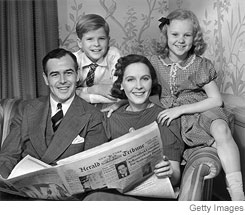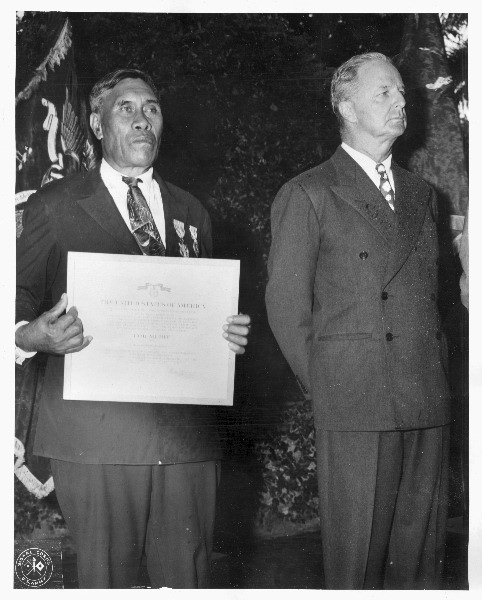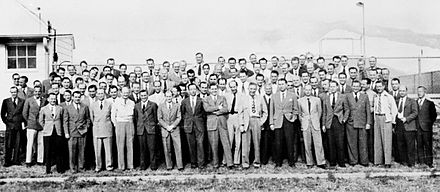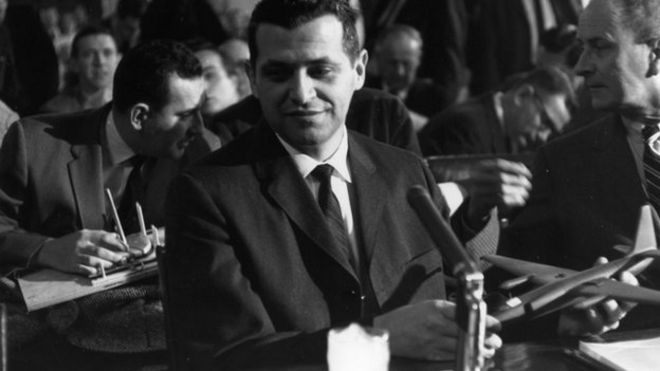 Born Norma Jeane Mortenson on June 1, 1926, actress and sex symbol Marilyn Monroe had a very difficult childhood. She never knew her father and when she was very young her mother Gladys was committed to an insane asylum after developing psychiatric problems and attempting to smother Monroe in her crib with a pillow. Monroe spent most of her childhood in foster homes and orphanages where she was sexually assaulted and claimed that she was raped at age 11.
Born Norma Jeane Mortenson on June 1, 1926, actress and sex symbol Marilyn Monroe had a very difficult childhood. She never knew her father and when she was very young her mother Gladys was committed to an insane asylum after developing psychiatric problems and attempting to smother Monroe in her crib with a pillow. Monroe spent most of her childhood in foster homes and orphanages where she was sexually assaulted and claimed that she was raped at age 11.Monroe's only way out of the foster care program was marriage, so at 16 she dropped out of high school and married her boyfriend Jimmy Dougherty. Since her new spouse was in the merchant marine, he was eventually sent to the South Pacific. During his absence, Monroe got a job at a munitions factory in Van Nuys, California, where she was discovered by a photographer. When her husband came home in 1946, Monroe had a successful career as a model and had adopted the name Marilyn Monroe and dyed her hair blonde in preparation for an acting career as her dream was to become a star like Jean Harlow and Lana Turner.
As Monroe focused more on her career, her husband became resentful and unsupportive and they divorced in lat 1946, the same year Monroe signed her first movie contract. Monroe's acting career did not take off until the 50s when her parts in All About Eve and The Asphalt Jungle impressed audiences and critics and gained her a lot of attention. Her first hit as the star of a film was the musical comedy Gentlemen Prefer Blondes in 1953 which led to many more roles in light comedic films. That same year she was the centerfold in the first edition of Playboy which expanded her image as a sex symbol. She soon was wed to Joe DiMaggio in 1954, but they divorced after 9 months due to his abuse.
 While Monroe was loved by audiences and was an international star, she had immeasurable insecurities about her acting abilities and suffered from chronic pre-performance anxiety that made her physically ill and was the cause of her habitual tardiness on film sets. Her absences were so extreme that it frequently upset her co-stars and crew. These insecurities caused her to move to New York in 1956 to pursue deeper roles than a bubbly dumb blonde. She starred in Bus Stop and The Prince and the Showgirl, and both were successful but in the latter Monroe's erratic behavior due to her anxiety and problems in her personal life resulted in very tense relations with her co-stars and crew. She returned to her old genre of movies in 1959 and won a Golden Globe award for her role in Some Like It Hot for "Best Actress in Comedy".
While Monroe was loved by audiences and was an international star, she had immeasurable insecurities about her acting abilities and suffered from chronic pre-performance anxiety that made her physically ill and was the cause of her habitual tardiness on film sets. Her absences were so extreme that it frequently upset her co-stars and crew. These insecurities caused her to move to New York in 1956 to pursue deeper roles than a bubbly dumb blonde. She starred in Bus Stop and The Prince and the Showgirl, and both were successful but in the latter Monroe's erratic behavior due to her anxiety and problems in her personal life resulted in very tense relations with her co-stars and crew. She returned to her old genre of movies in 1959 and won a Golden Globe award for her role in Some Like It Hot for "Best Actress in Comedy".
In 1962 Monroe was fired from Something's Got to Give because of her excessive absence from the set which she claimed were due to an illness. At this point, both Monroe's career and personal life were in turmoil as she had recently divorced her third husband Arthur Miller. On May 19, 1962 Monroe gave her final performance with her now famous tribute to JFK at his birthday celebration singing "Happy Birthday, Mr. President". Four months later on August 5, Monroe died in her home in Los Angeles at age 36. Her d
eath was officially ruled a drug overdose, but there are many conspiracies that she was murdered.
She was buried in a "Cadillac casket" in her favorite Emilio Pucci dress. Hugh Hefner bought the crypt next to her and her ex husband Joe DiMaggio had red roses delivered to her crypt for the next 20 years. Her films grossed more than 200 million dollars during her career and she is still known as one of the most popular icons and sex symbols.
Sources:
http://www.biography.com/people/marilyn-monroe-9412123#famed-career
http://www.vanityfair.com/news/2008/10/marilyn200810



































 Between 1948 and 1951, both the Americans and the Soviet Union attempted to send animals into space, but they never reached orbit and many of them perished. The US sent a monkey, Albert II, up 83 miles into space, but after surviving the flight he died on impact. In 1950, the US also sent a mouse to study its behavior with weightlessness, but that also died. Finally, the US sent an anesthetized monkey, Yorick, up to space with 11 mice. Yorick survived the flight but died after the landing still inside the space capsule, and 9 mice survived.
Between 1948 and 1951, both the Americans and the Soviet Union attempted to send animals into space, but they never reached orbit and many of them perished. The US sent a monkey, Albert II, up 83 miles into space, but after surviving the flight he died on impact. In 1950, the US also sent a mouse to study its behavior with weightlessness, but that also died. Finally, the US sent an anesthetized monkey, Yorick, up to space with 11 mice. Yorick survived the flight but died after the landing still inside the space capsule, and 9 mice survived. 







